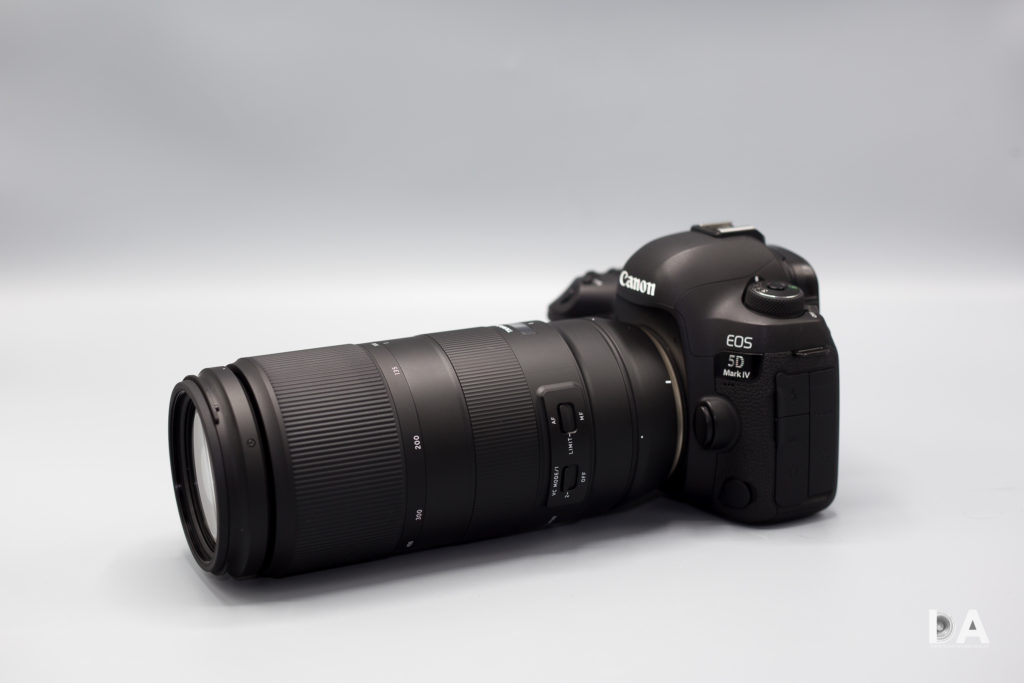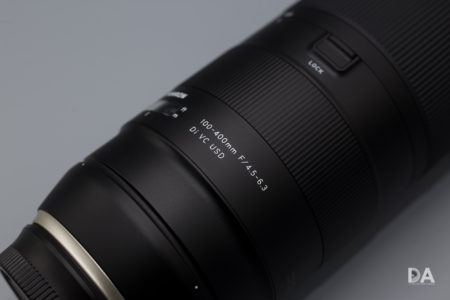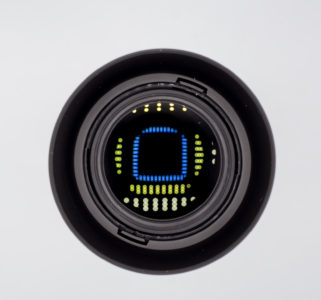Tamron started a new revolution of affordable ultra-telephoto zoom lenses with the SP 150-600mm f/5-6.3 VC USD in 2013. The lens was an instant success and spawned a whole new class of lenses. Last year, Tamron launched a second generation of the lens, the G2, which showcased their new build quality and advances in autofocus and image stabilization (Tamron’s VC, or Vibration Compensation). Despite the excellence of those lenses, however, there are a large number of photographers for whom they are simply too large and heavy. They want the telephoto reach, but want it in a lighter, more compact package…and don’t want to break the bank to afford it. If this happens to be you, then your prayers may just have been answered in the form of Tamron’s newest lens – the 100-400mm f/4.5-6.3 Di VC USD (A035).
Earlier this year I reviewed a similar new lens from Sigma, though that lens has a smaller maximum aperture at 100mm of f/5 rather than f/4.5. I was surprised by how comparable the image quality was to the lens I benchmarked it against – the exceptional Canon EF 100-400mm f/4.5-5.6L IS II. That lens costs some 2 ½ times as much, but you would not have known it from the optical performance alone. Where the Sigma lagged was in autofocus performance. Its focus motor simply couldn’t keep up with the kind of fast action that many people will want to track with this kind of lens. When I heard that Tamron was about to release a similar lens at the same price point, I was excited…mostly for the simple reason that Tamron has demonstrated the ability to wring a lot more speed and accuracy out of its most recent USD ring-type focus motors. The key is dual MPU processors, which enable the lenses equipped with them to offer focus speed and accuracy that, in my tests, can rival that of the best first party lenses.
I was excited to get my hands on a copy of the lens, and I immediately began to benchmark it against that same excellent Canon lens. The Canon’s advantage is a little more light gathering potential (it has a slight aperture advantage across most of the zoom range) and a more professional grade build, but that comes at the cost of an extra half kilo (1 pound) of weight. The 100-400 VC’s barrel is primarily magnesium, and the build quality feels very good, but it manages to come in as the lightest lens in the class at 1.11 kilos (about half the weight of the 150-600 G2 lens). The lens itself is fairly compact at 199mm (the 150-600 G2 is 260mm). It’s actually a few millimeters longer than the Canon, but has a slimmer profile (about 8mm less in diameter) which results in a very common 67mm front filter thread. It sports a moisture resistant body, complete with a rear gasket at the lens mount, internal seals, and a fluorine coating on the front element. All in all this is a very nicely built lens that strikes a nice compromise between build quality and weight savings.
The 100-400 VC has an optical formula of 17 elements in 11 groups, and, while I was surprised at how well the Sigma did in my earlier comparison, my expectations had grown as a result. I had high expectations for this lens. Fortunately, the Tamron delivers and in my head-to-head tests, the image quality produced by it is just as good as that of the much more expensive Canon.
The A035 delivers a very strong maximum magnification figure of nearly 0.28x, which is very handy for shooting macro-ish shots with an amazing working distance of right under 1.5 meters. Images are crisp, detailed, and the lens produces excellent contrast even with the aperture wide open. It performed consistently strong across the focal range, with an excellent performance at 400mm, perhaps the most important focal length of the lens.
One area that I complained about the Sigma 100-400 Contemporary lens was that it didn’t come with a tripod collar. For many shooters this a key piece of equipment. The Tamron 100-400 VC doesn’t come with a tripod collar either, but there is tripod mount accessory available at an additional cost. This is clearly an area where Tamron has elected to keep the cost of the lens down.
The nine rounded aperture blades produce excellent quality bokeh. Unlike the Canon, the Tamron 100-400mm VC doesn’t suffer from focus breathing and it delivers tighter framing at most distances short of around 20 meters or so. As a result, the potential for creating a highly blurred background in many settings is a bit higher. I noted that the lens had good flare resistance and excellent chromatic aberration control as well, with no apparent green or purple fringing in high contrast areas.
The most crucial test came when shooting high speed action in AF Servo mode. I used a Canon 5D Mark IV for this test, and shot the Tamron and Canon lenses back to back. I found that while the Canon delivered slightly more keepers (as expected), the Tamron was nearly as good. Good enough, in fact, that I think most “birders” and sport shooters will be satisfied with the lens focus speed. I find with any such lens that familiarity allows one to improve their keeper rate, and the fact that I was able to get some solid results on my first such outing with it was very encouraging. In stills performance, I felt the focus speed was as fast as that of the Canon, which is saying something. Focus accuracy was very good. I did note some occasional pulsing with a low contrast target or when shooting in backlit conditions, but this can be minimized by employing the focus limiter switch.
Like other recent Tamron lenses, the 100-400mm VC is compatible with the Tap-in Console which allows you to customize the lens behaviour in several key areas including the focus limiter, autofocus calibration at a variety of focal lengths and distances, and even making some changes to the behaviours of the Vibration Compensation.
The VC seems to do a solid job without being obtrusive in behaviour, and is near silent in operation. It is rated at four stops of assistance, which is very important in such a lens in assuring that your end results are nice and sharp instead of ruined by camera shake.
All in all, this is a lot of lens for the money. It is very, very close to the first party options in performance while offering up exceptional value. Many photographers cannot afford the pricey first-party lenses in this class, but will probably be able to afford this lens. For those wanting better reach and image quality than the “consumer grade” kit zooms, the Tamron 100-400mm f/4.5-6.3 Di VC USD is a breath of fresh air. You have to accept very few compromises with this lens, and that makes it an easy lens to recommend.
About the Author
Dustin Abbott is a full time pastor/part time photographer from Pembroke, Ontario who shoots professionally but primarily for capturing beauty and sharing it with others. www.dustinabbott.net























18-400 mm f/3,5-6,3 Di II VC HLD…
Is there an anticipated revew in vew ?
JR
Thanks for this initial review !
Compared to the Sigma :
– Is the color rendition better/more saturated ?
– Are the contrast and microcontrast/texture better ? (Sigma is a bit mushy and veiled especially at 400mm)
– Is the flare resistance better than the Canon or Sigma ?
Regards,
David
Hi David,
bear in mind that I haven’t directly compared the Sigma and Tamron lenses, though I did benchmark them both during my review against the Canon 100-400L II. I also did not review them during the same season, which can effect perception of things like color rendition. That being said, I don’t feel like there was a major difference in the color saturation of either lens, though I do feel like the Canon produces a bit more “pop” due to slightly better contrast. The Tamron is a hair stronger than the Sigma at 400mm, but I didn’t find the Sigma “mushy” or “veiled” at all in my tests. That sounds more like a focus issue than an optical issue. Flare resistance is roughly the same across the lenses. To be honest, there isn’t a lot of difference between any of these lenses optically; it is other things that set them apart. Both the Sigma and Tamron are optically exceptional for their price point, and there is little difference between them and the first party lenses optically. The biggest reason I would recommend the Tamron over the Sigma is that I found the Tamron focused quicker and worked better for tracking action.
Dustin Abbott
Thank Dustin Abbott for this first review, hope to having more comparison reviews of this lens.